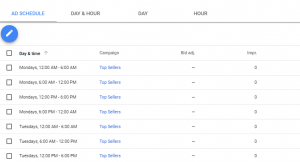In a 2013 interview with Howard Stern, mega producer and writer JJ Abrams recounted a painstakingly-built set of San Francisco for Star Trek: Into Darkness. As Abrams lamented the extremely expensive multiple stages, Stern replied simply, “I’ll probably end up seeing that on my iPad mini!”
This jab at today’s mobile consumption may seem tongue-in-cheek, but it’s increasingly important for content marketers to consider mobile a focus, rather than a secondary consideration.
This is especially true of video. Mobile audiences don’t give content marketers the rapt attention of film goers, yet they’re far more involved in the viewing experience than typical television audiences. In other words, mobile video users are consuming video content in a new context with completely different intentions than traditional audiences.
If you want to be a successful digital content marketer, you must plan for mobile in every single video campaign. Here are a couple of tips to make your video content mobile friendly, without touching your bottom line.
Better seen than heard
In mobile video, visual elements drive the content first and foremost. Sound, on the other hand, should be less of a priority. Though great audio is always a plus, the sound coming out of small smartphone speakers usually leaves much to be desired. What’s more, mobile video is often viewed in public spaces, meaning there’s a good chance that your audience is watching with their mobile device on mute.
This means you’re better off sinking money into graphic design to accompany the video. For example, prominent on-screen text allows the viewer to navigate the video by visual landmarks, rather than listening for the right part.
Pro tip: place your on-screen text so that it doesn’t compete with the video scrubber. Also, make text slightly bigger than you normally would, so that it reads well on a phone.
Launch off the platform
If a video is being viewed on mobile, there’s a strong chance it’s being watched through a social platform. This means you should optimize each video for the platform where you’re uploading.
For example, pay extra attention to metadata if uploading to YouTube. If you’re uploading to Twitter, make sure you’ve got a sleek, bold thumbnail. These sorts of seemingly throwaway options can make or break a video’s visibility, especially if you want it to be indexed in search.
Also, if you want more than your existing subscribers to see your new video, encourage sharing with Calls to Action (CTAs). If you have funds, consider sinking some paid distribution cash into the video, as well.
Short and Sweet
Most consumers still go to their desktop for extremely detailed information. On mobile, viewers prefer a quick hit of content or at most, a very broad rundown. Short run times also help your video audience retention rate, which can greatly improve SEO value.
This means that your mobile video content should be short, serviceable and to the point. In other words, a good mobile video about fixing a sink should get straight to troubleshooting. Skip the diagrams or historical tidbits unless absolutely necessary.
Once you’ve got your mobile video campaign planned out, what comes next? Make sure you know how to keep your budget on point, and don’t forget the most important step in video pre-production.
(238)
Report Post




